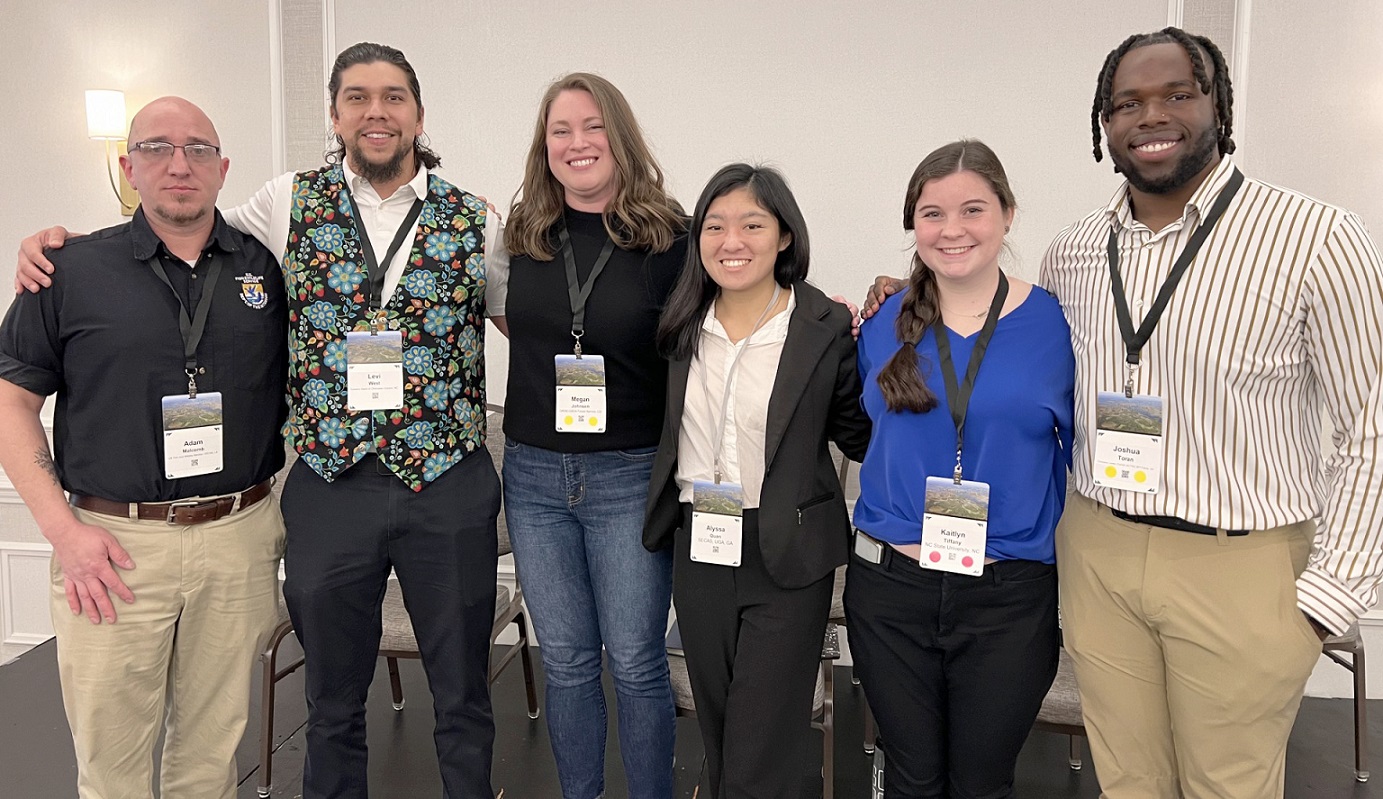Emerging leaders - Reflections on the Southeast Landscape of the Future Summit

Introduction
As a Directorate Fellow with the U.S. Fish and Wildlife Service (FWS), I was honored to be part of the planning team for the inaugural Southeast Landscape of the Future Summit, held February 27-29 in New Orleans, LA. This landmark event brought together senior leaders from federal, state, and Tribal natural resource organizations, alongside emerging voices in conservation, to envision a collective future for the Southeast landscape. SECAS co-hosted the Summit along with the Southern Region of the U.S. Forest Service (USFS) and the Southeast Climate Adaptation Science Center (CASC).
Purpose
The Southeast Landscape of the Future Summit was more than a gathering of minds—it was a deliberate and strategic endeavor to redefine the trajectory of conservation efforts across the Southeast region. At its core, the summit aimed to provide a medium for senior leaders, emerging voices, and stakeholders from various backgrounds to come together with a shared purpose: envisioning and shaping a more sustainable and resilient future for the Southeast landscape.
The summit sought to transcend traditional boundaries and foster collaboration across organizational, disciplinary, and cultural divides. It was a call to action, inviting participants to collectively define a shared vision for conservation that acknowledges the interconnectedness of ecological, social, and economic systems.
Through dialogue, exploration, and engagement, the summit aimed to catalyze transformative change by:
-
Defining a Shared Vision: Participants were encouraged to think beyond individual interests and agendas, working together to articulate a collective vision for the future of conservation in the Southeast. Defining a shared vision was a guiding light, illuminating pathways toward sustainable land and water management practices, thriving ecosystems, and vibrant communities.
-
Building Connections and Networks: The summit provided a forum for participants to connect regionally, fostering relationships and networks that transcend organizational boundaries. By building bridges between stakeholders, the summit aimed to strengthen the collective voice and community of conservationists across the Southeast, empowering them to collaborate more effectively towards common goals.
-
Fostering Innovation and Collaboration: Through roundtables, dialogue streams, and panel discussions, the summit encouraged participants to think creatively and collaboratively about the challenges and opportunities facing conservation in the Southeast. It was an opportunity to share best practices, explore innovative approaches, and identify areas for collective action and collaboration.
-
Empowering Emerging Leaders: Critical to the summit’s purpose was the empowerment of emerging leaders in conservation. By providing them with a platform to share their insights, experiences, and ideas, the summit aimed to amplify their voices and perspectives, ensuring that the next generation of conservationists is equipped to lead and inspire change.
In essence, the purpose of the Southeast Landscape of the Future Summit was to ignite a spark of inspiration, collaboration, and action that would reverberate throughout the conservation community in the Southeast and beyond. It was a bold step forward in our collective journey towards a more sustainable and resilient future for the Southeast landscape.
Summit Insights
At the heart of my experience at the summit was the Emerging Leaders panel, with each panelist bringing unique perspectives and experiences to the table. Among them were:
- Megan Johnson, a USFS Oak Ridge Institute for Science & Education (ORISE) Postdoctoral Fellow and U.S. Geological Survey (USGS) National CASC Science to Action Fellow
- Adam Malcomb, a Blueprint user support specialist for SECAS
- Alyssa Quan, a Ph.D. candidate at the University of Georgia and U.S. FWS Public Lands Corps Fellow
- Kaitlyn A. Tiffany, an M.S. student in Parks, Recreation & Tourism Management at NC State University and Minorities in Natural Resources Conservation (MINRC) Intern
- Levi West, a member of the Eastern Band of Cherokee Indians and a Master of Sustainability Leadership student at Arizona State University
They highlighted the importance of innovative problem-solving, transparency, and challenging existing conservation practices.
During the panel, we discussed the challenges facing emerging leaders in conservation today, including access to developmental opportunities and navigating the uncertainties of social, political, and environmental change. The panelists shared their visions for the future of conservation in the Southeast, emphasizing the critical role of historically underrepresented partners, such as Black, Indigenous people of color (BIPOC), and non-traditional partners in private industry and law.
The summit provided a platform for meaningful connections and dialogues among participants, fostering a deeper understanding of shared goals for resilient habitats and the intersectionality of inclusion and systems thinking in conservation efforts. Emerging leaders were empowered through various roles, including guiding discussions, facilitation, and goal-setting exercises.
Personal Reflections
As moderator of the emerging leaders’ panel and a participant in the summit, I was struck by the collective passion and energy driving conservation efforts in the Southeast. However, I also recognized the inevitability of conflict at the landscape scale and the need to manage it effectively to achieve shared outcomes. My experience as a Directorate Fellow constantly reminded me of the importance of collaboration and strategic planning to prioritize collective action.
In conclusion, the Southeast Landscape of the Future Summit marks a significant milestone in our collective journey toward a more sustainable and resilient future. As emerging leaders, we are poised to build upon the momentum generated by this event and continue driving positive change across the Southeast landscape.